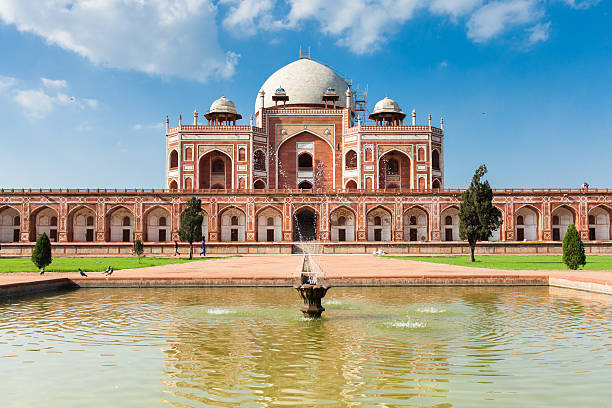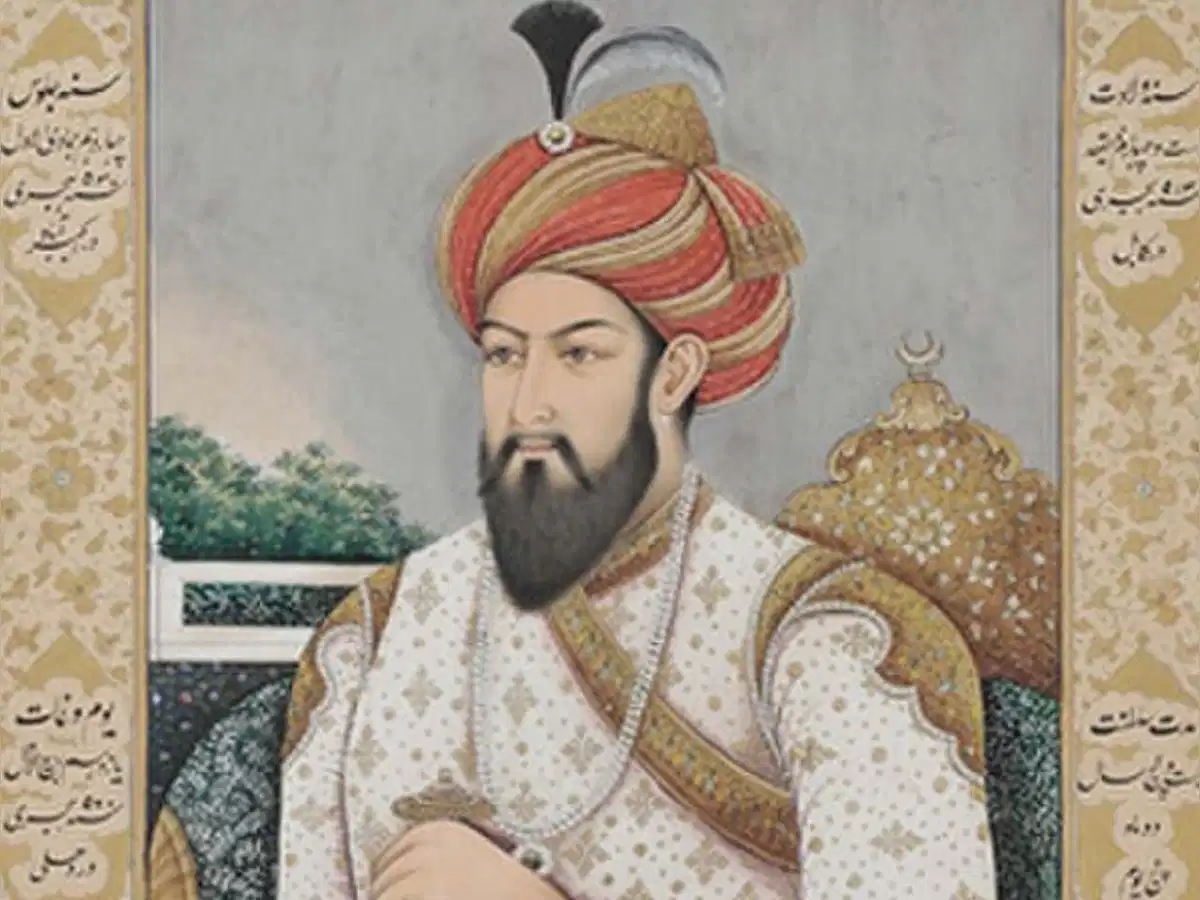Important Facts For Prelims
Humayun Tomb World Heritage Site Museum
- 25 Jul 2024
- 7 min read
Why in News?
The Humayun’s Tomb World Heritage Site Museum is set to open for visitors. Nestled between Sunder Nursery and Humayun’s Tomb in Nizamuddin, Delhi, this museum promises to offer visitors a unique insight into the life and times of the second Mughal Emperor, Humayun.
What are the Key Highlights of Humayun's Tomb Site Museum?
- Underground Design: The museum is designed like a baoli (stepwell) and includes a 100-seat auditorium, temporary galleries, cafés, meeting rooms, and a library.
- Unique Personal Items: Artefacts such as a pear-shaped water vessel belonging to Jauhar Aftabchi, a biographer of Humayun, and a helmet used by Humayun as a cooking vessel during his travels to Persia.
- The artefacts displayed in the museum are on loan from the National Museum for 10 years, ensuring a rich and varied display for visitors.
- Mughal Coins and Throne: Exhibits include coins from the reigns of 18 Mughal-era kings and the throne of Bahadur Shah Zafar, the last Mughal emperor.
- Highlights include: Coins from Akbar’s era with ‘Allah’ on one side and ‘Ram’ on the other. Expensive coins from Jahangir’s era. Rare coins minted by Bahadur Shah Zafar.
- Architecture and Personality: Focuses on the architecture of Humayun’s Mausoleum and the emperor’s personality. Exhibits convey stories of Humayun’s travels, administration, interest in reading, astrology, the arts, and his patronage of architecture.
- Cultural Figures: Highlights four cultural figures associated with the Nizamuddin area from the 14th century: Sufi Saint Hazrat Nizamuddin Auliya, Poet Amir Khusrau Dehalvi, Rahim, a commander-in-chief of Akbar’s army and poet, and Dara Shukoh, known for translating the Upanishads into Persian.
- Conservation Efforts: Managed by the Archaeological Survey of India (ASI), the museum is part of a larger conservation effort encompassing the 300-acre Humayun’s Tomb-Sunder Nursery-Nizamuddin Basti area.
Humayun’s Tomb
- Built in 1570, Humayun's Tomb is the first major garden tomb in the Indian subcontinent, setting a precedent for Mughal architecture, which culminated in the Taj Mahal. It was commissioned by his first wife, Empress Bega Begum, in 1569-70 and designed by Persian architects.
- It includes other 16th-century Mughal tombs like Nila Gumbad and Isa Khan Niyazi, an Afghan noble.
- The tomb features a charbagh garden, a high-terraced platform, and a marble-clad dome. The mausoleum, known as the 'dormitory of the Mughals,' houses over 150 Mughal family members.
- The tomb is centred around the Shrine of the 14th century Sufi Saint, Hazrat Nizamuddin Auliya. Due to the belief that it is fortunate to be buried near a saint's grave.
- It was declared a UNESCO World Heritage Site in 1993 and has undergone extensive restoration work.
- The ASI and Aga Khan Trust for Culture manage the site, ensuring its preservation and protection under various legislations.
Humayun
- Early Reign: Humayun, the eldest son of Babur, faced immediate challenges upon his succession. His governance was marked by administrative and financial instability.
- Major Battles: Siege of Chunar (1532) Humayun achieved victory against the Afghans and besieged Chunar fort. Battle of Chausa (1539) Humayun faced defeat by Sher Shah Suri, narrowly escaping the battlefield. Battle of Kannauj (1540) also known as Battle of Bilgram Sher Shah Suri’s complete victory forced Humayun into exile.
- Internal conflicts, including a rebellion by Humayun’s brother Hindal and Kamran’s schemes, further weakened his position.
- Humayun became an exile for fifteen years. During this time, he married Hamida Banu Begum and had a son named Akbar.
- Humayun sought help from the Shah of Persia, who agreed to support him in exchange for certain conditions. With Persian assistance, Humayun captured Kandahar and Kabul in 1545.
- Persian Influences: Humayun introduced Persian administrative practices, improving revenue systems and promoting Persian arts and culture.
- Architectural Achievements: He founded Dinapanah, built the Jamali mosque, and initiated the construction of Humayun’s Tomb, which was completed by his wife, Hamida Banu Begum.
- Cultural Impact: Humayun played a key role in the development of Mughal painting by bringing Persian artists like Mir Sayyid Ali and Abdal Samad to India.
- He established the Nigaar Khana (painting workshop) and began the project of illustrating the Hamza Nama, which his successor Akbar continued.
- Literary Contributions: His sister, Gul Badan Begum, authored the "Humayun-Nama," documenting his reign and legacy.
UPSC Civil Services Examination, Previous Year Question (PYQ)
Prelims
Q) With reference to Mughal India, what is/are the difference/differences between Jagirdar and Zamindar? (2022)
- Jagirdars were holders of land assignments in lieu of judicial and police duties, whereas Zamindars were holders of revenue rights without obligation to perform any duty other than revenue collection.
- Land assignments to Jagirdars were hereditary and revenue rights of Zamindars were not hereditary.
Select the correct answer using the code given below.
(a) 1 only
(b) 2 only
(c) Both 1 and 2
(d) Neither 1 nor 2
Ans: (d)






